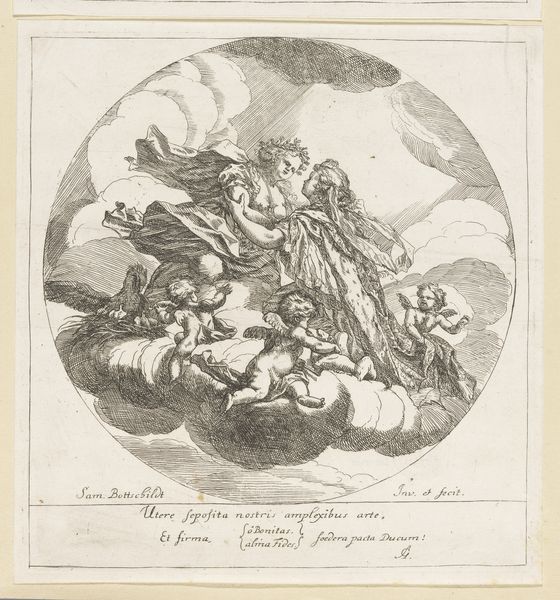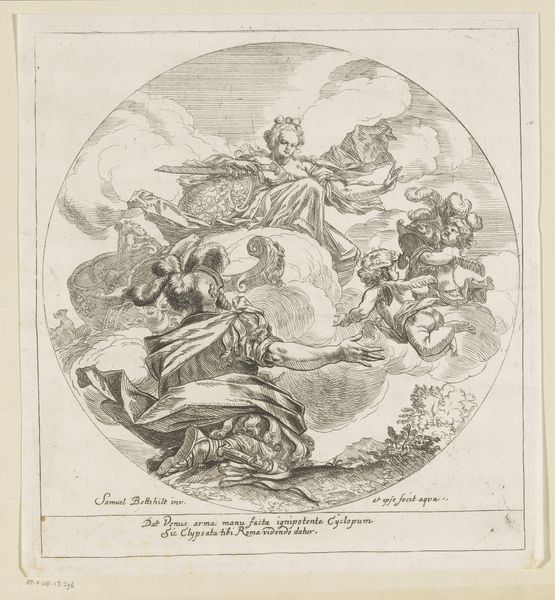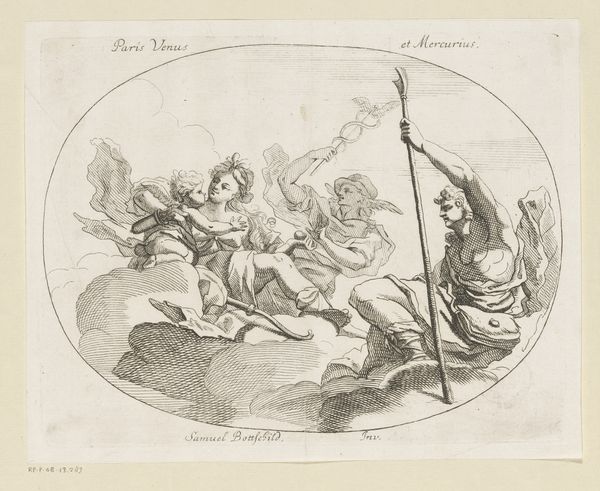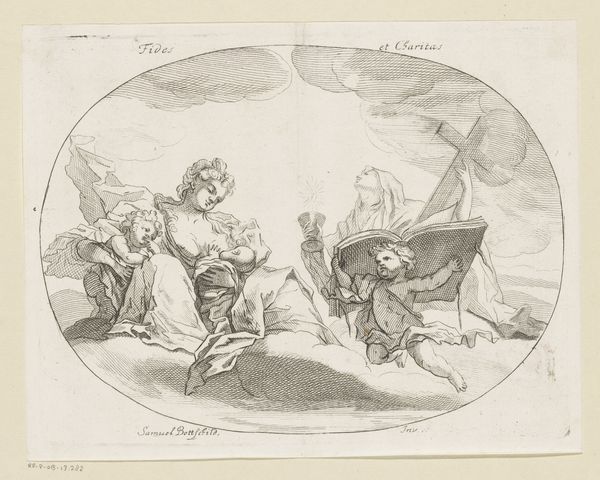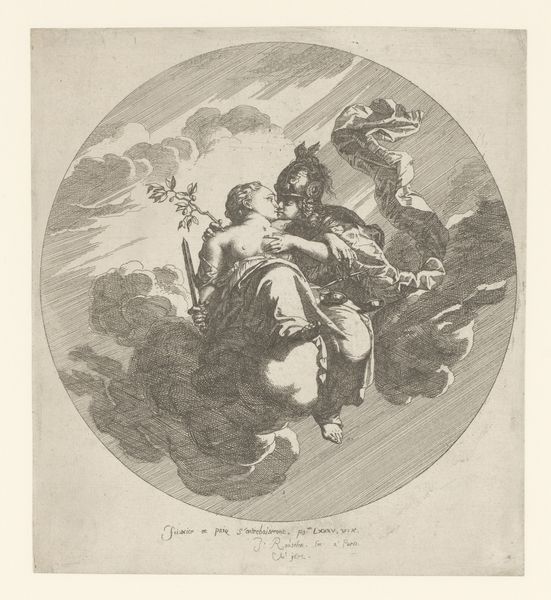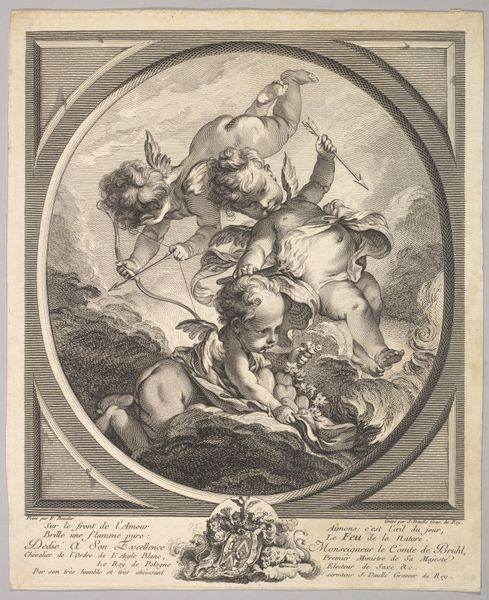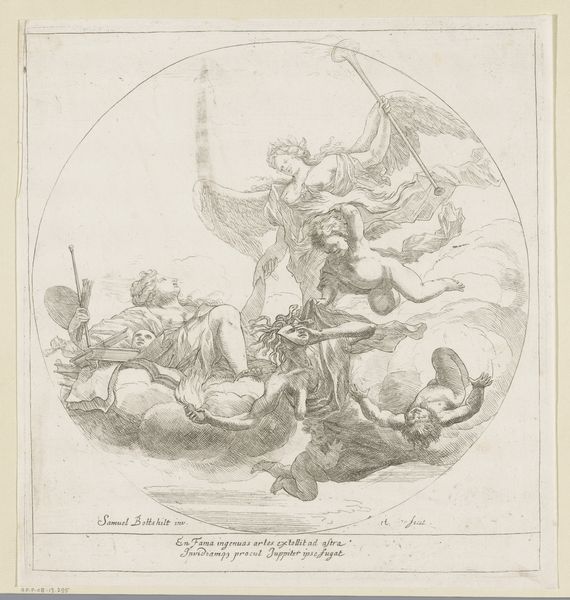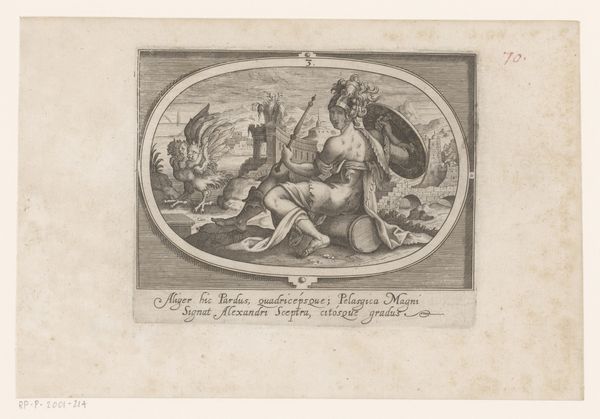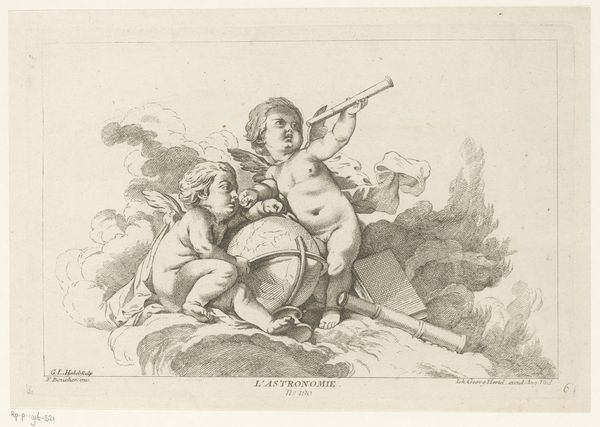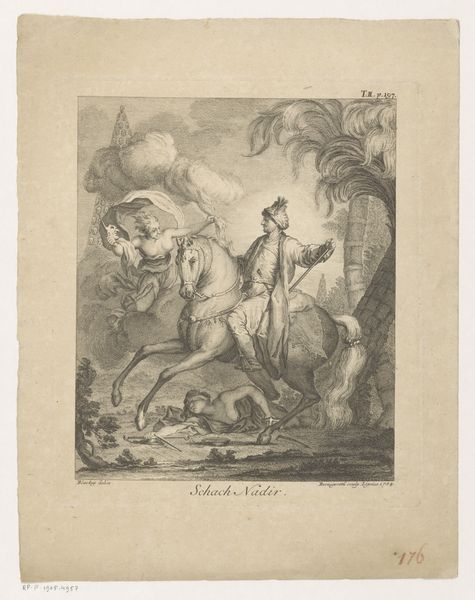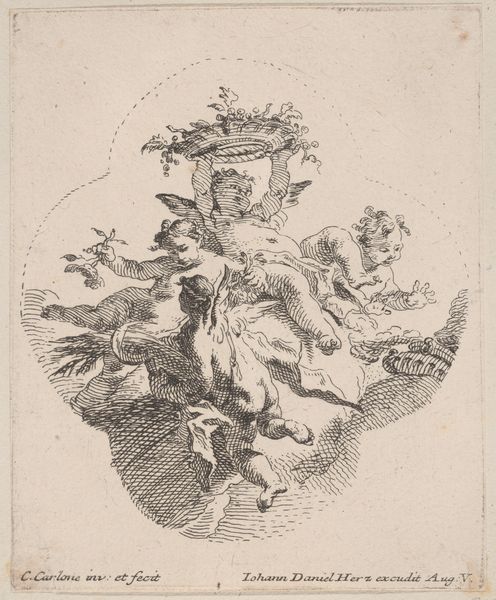
engraving
#
portrait
#
allegory
#
baroque
#
symbol
#
figuration
#
line
#
history-painting
#
engraving
Dimensions: height 261 mm, width 250 mm
Copyright: Rijks Museum: Open Domain
Editor: This engraving, "Astraea (Justice) and Pax (Peace)" made in 1693 by Samuel Bottschild, has a distinctly Baroque feel with its swirling clouds and allegorical figures. I'm really struck by the contrast between the ethereal figures and the sharpness of the engraved lines. What do you see in this piece, beyond the obvious symbolism? Curator: I see a fascinating document of its time. Consider the context: 1693, Europe was constantly at war. This print, then, becomes a powerful statement about the *desire* for peace and justice, rather than a reflection of reality. Do you notice how the figures of Justice and Peace are literally embracing, almost intertwined? Editor: Yes, and Justice is holding an olive branch, while they are surrounded by putti! Curator: Exactly! This speaks to a specific *political* function of art. Prints like these, widely circulated, helped to shape public opinion and promote certain ideals. It presents an ideal, a desired public image of a ruler who brings both peace and justice to their people. The very act of disseminating such imagery, the role of printmaking itself, served a sociopolitical purpose. Do you agree? Editor: That makes a lot of sense. I hadn't considered the dissemination aspect of printmaking and how this could actively influence a widespread audience. I thought of it more as decorative, but I get it! Curator: Precisely. The decorative aspect is interwoven with its function. Remember, images carry immense power. It gives us much food for thought on the connection of Justice, Peace, and Political rule. Editor: This really changed how I see it!
Comments
No comments
Be the first to comment and join the conversation on the ultimate creative platform.
